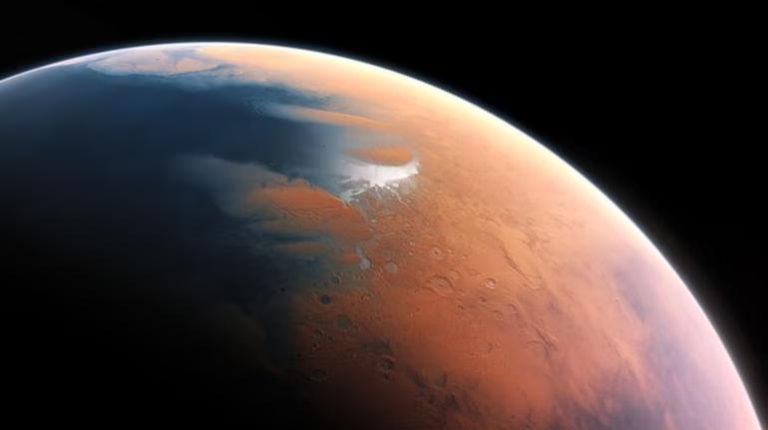
Mars May Have Once Had Rain & Snowfall, Finds New Study
For years, scientists have been fascinated by the possibility of life on Mars. The Red Planet’s barren landscape and harsh environment have led many to believe that it is unlikely to support life as we know it. However, a recent study by the University of Colorado Boulder has shed new light on the planet’s past, suggesting that Mars may have once experienced rainfall and snowfall, feeding valleys and channels.
The study, published in the journal Science Advances, analyzed data from NASA’s Mars Reconnaissance Orbiter, which has been orbiting the planet since 2006. The researchers used a combination of computer modeling and imaging data to recreate the Martian climate around 4 billion years ago, when the planet was still in its formative stages.
According to the study, the Martian climate was much more hospitable to life than it is today. The planet’s atmosphere was thicker and more hospitable, with temperatures ranging from -12°C to 50°C (-10°F to 122°F). This means that water could have existed on the surface of Mars in liquid form, rather than just as ice or vapor.
The researchers found evidence of ancient rivers and lakes, which suggests that there was a significant amount of water on the surface of Mars at some point in its history. This water is believed to have been fed by rainfall and snowfall, rather than just being the result of geological processes.
“We found that the Martian climate was much more Earth-like than we previously thought,” said Dr. Joseph Levy, lead author of the study. “The planet was capable of supporting liquid water, which is a key ingredient for life as we know it.”
The study’s findings are significant because they suggest that Mars may have had conditions that were conducive to life in the past. While it’s unlikely that life still exists on the planet today, the possibility of past life on Mars is an exciting one.
The source of the water on Mars is still unknown, but the researchers believe that it may have come from a combination of sources. One possibility is that the water was delivered to the planet through comets or meteorites, which are known to contain water. Another possibility is that the water was produced by the planet’s interior, through geological processes such as volcanic activity.
The study’s findings also have implications for the search for life on Mars. If the planet did once have a more hospitable climate, it’s possible that life may have evolved there in the past. The discovery of ancient rivers and lakes on Mars could provide evidence of past life on the planet, which would be a major breakthrough in the search for extraterrestrial life.
In recent years, NASA’s Curiosity rover has been exploring the Martian surface, searching for signs of life and studying the planet’s geology. The rover has found evidence of ancient lakes and rivers on Mars, which suggests that the planet may have had a more hospitable climate in the past.
While the study’s findings are exciting, they also raise many questions. For example, how long did the Martian climate remain hospitable to life? Was there a single event that caused the climate to change, or was it a gradual process? These are questions that scientists will need to answer in order to fully understand the planet’s history.
In conclusion, the study’s findings suggest that Mars may have once had a more hospitable climate, with rainfall and snowfall, and possibly even life. While the search for life on Mars is ongoing, the discovery of ancient rivers and lakes on the planet is a significant step forward in our understanding of the Red Planet’s history.






